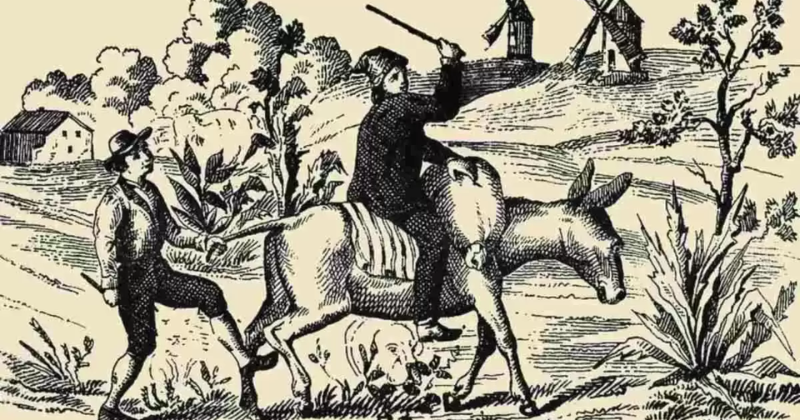Optical illusions have long captivated the human mind, challenging our perception and revealing the complexities of how our brains interpret visual information.
Among the myriad of illusions that have fascinated us, the “Woman, Cat, and Dog” illusion stands out as a remarkable testament to the intricacies of human vision.
In this article, we delve into the depths of this captivating illusion, exploring its origins, the science behind it, and the implications it holds for our understanding of visual perception.
Unraveling the Mystery:

At first glance, the “Woman, Cat, and Dog” optical illusion appears to be a simple image—a grayscale rendering of what seems to be a nondescript scene.
However, upon closer inspection, hidden within the image are three distinct figures: a woman, a cat, and a dog.
The challenge lies in identifying all three within a mere 10-second timeframe—a task that proves to be surprisingly difficult for many.
Origins of the Illusion:
The origins of this illusion trace back to the early days of experimental psychology, where researchers sought to understand the mechanisms underlying visual perception.
While the exact origin of the “Woman, Cat, and Dog” illusion remains somewhat elusive, it shares similarities with other classic illusions dating back to the mid-20th century.
One theory suggests that the illusion was crafted by an anonymous artist seeking to test the limits of human perception.
Another posits that it emerged from the annals of cognitive psychology, where scientists explored the phenomenon of visual masking and its effects on object recognition.
The Science Behind the Illusion:
To comprehend why the “Woman, Cat, and Dog” illusion confounds our senses, we must delve into the intricacies of visual processing in the brain.
When we view an image, our visual system processes the incoming information through a series of complex neural pathways, ultimately constructing a coherent representation of the scene before us.
However, certain factors can disrupt this process, leading to perceptual ambiguities and illusions.
In the case of the “Woman, Cat, and Dog” illusion, several factors contribute to its deceptive nature:
Ambiguous Gestalt: The arrangement of elements within the image creates an ambiguous Gestalt, where the contours and shapes can be interpreted in multiple ways.
This ambiguity confounds our ability to perceive the distinct figures hidden within the scene.
Visual Masking: The overlapping elements within the image act as visual masks, obscuring the features of the woman, cat, and dog.
This phenomenon, known as visual masking, inhibits our ability to discern the individual components of the scene.
Perceptual Set: Our prior experiences and expectations influence how we perceive visual stimuli.
In the case of the “Woman, Cat, and Dog” illusion, our perceptual set may bias us towards interpreting certain elements of the image over others, further complicating the task of identification.
Implications for Visual Perception:
The “Woman, Cat, and Dog” illusion offers valuable insights into the complexities of visual perception and the limitations of our cognitive processes.
By probing the boundaries of our perceptual abilities, illusions such as this challenge conventional notions of reality and highlight the role of context in shaping our interpretations of the world around us.
Moreover, the study of optical illusions has practical applications in fields such as psychology, neuroscience, and computer vision.
By understanding how illusions manipulate our perception, researchers can gain deeper insights into the inner workings of the human mind and develop more sophisticated algorithms for image recognition and analysis.
Conclusion:
In the realm of optical illusions, the “Woman, Cat, and Dog” stands as a captivating enigma, beckoning us to unravel its mysteries and discover the hidden truths within.
As we delve into its depths, we gain a newfound appreciation for the complexities of human vision and the remarkable feats of cognitive processing that underlie our perception of the world.
So, the next time you encounter a seemingly ordinary image, take a closer look—beneath the surface may lie a world of illusions waiting to be uncovered.
And who knows, perhaps you’ll uncover the woman, cat, and dog in just 10 seconds, mastering the 4K vision challenge with ease.
